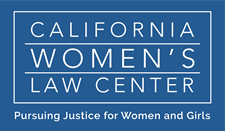-
- In the U.S., a woman who works full time earns just 80 cents to every dollar a man earns (89 cents in California).
- Most women of color experience and even wider gap. In 2019, Black women earned just 61 cents, Native Americans 58 cents, and Latina’s got only 53 cents to every dollar paid to a white man.
- Combined, California women lose out on $78.6 billion per year that they would have make if they were paid in line with men.
- More than one in five households in California are severely burdened by housing costs, meaning people are spending more than half of their income on household expenses.
- Roughly 83% of Section 8 housing vouchers go to female-headed households.
- Women now comprise 40% of the national homeless population, whereas only a few years ago they comprised just 25%.
- Women represent nearly two-thirds of people living in poverty over age 65.
- Pay inequality compounds over a lifetime, and is reflected in older adults’ pensions and retirement funds. In California, the median income of men over 65 is $31,000; for women it is just $15,500.
- Upwards of 75% of all caregivers are female, and they spend as much as 50% more time providing care than males.
- Female service members are particularly at risk for sexual assault: one in four experience Military Sexual Trauma.
- Women are the fastest growing segment of the homeless veteran population, comprising 9% nationally.
- A lack of female-only veterans housing exacerbates trauma and puts women service members and their families at risk of homelessness.
Economic Security
The persistent wage gap, over-representation in minimum wage jobs, inadequate paid family leave, workplace harassment, lack of access to health care, and housing discrimination are just some of the issues that impact a woman's financial stability. Economic vulnerability exacerbates other gender inequities, and CWLC works to ensure women have the resources they need be safe and healthy.
Economic security is central to many of the struggles women face. Financial dependence adds pressure to stay in abusive relationships, workplace harassment goes unreported by someone desperate to keep her job, an unintended pregnancy strains a family’s resources, and older women suffer from a lifetime of wage inequality. CWLC is committed to advancing gender equality by reducing women’s financial instability. We focus on four major areas: equal pay, secure housing, the needs of aging women, and supporting veterans and other vulnerable populations.
EQUAL PAY (see related resources)

More than 50 years after Congress passed the Equal Pay Act, the gender wage gap persists. This inequity is magnified for women of color, transgender, and disabled women. Several factors leave women shortchanged, and CWLC seeks to help confront these obstacles by advocating for a range of solutions including affordable childcare, a livable minimum wage, and flexible scheduling. CWLC fights pay inequality by representing plaintiffs who have been discriminated against, by holding public forums to engage our community, and by passing state laws like the Fair Pay Act, one of the toughest laws in the nation, requiring equal pay for substantially similar work.
CONSIDER THIS
SECURE HOUSING (see related resources)

Access to safe and affordable housing is critical for women to live healthy, autonomous lives. Unfortunately, the ability to secure and retain housing is often made more difficult for women by the effects of gender discrimination. The gender pay gap and other factors limit a woman’s financial resources, forcing some women to spend large portions of their income on rent and making the prioritization of childcare, food, and medical care incredibly difficult. Economic insecurity and limited housing options can prohibit women from relocating to pursue career and educational opportunities, and difficulties in obtaining new housing, combined with a lack of financial independence, can prevent survivors of domestic violence from leaving an abusive partner. Many female military service members face obstacles to securing safe and affordable housing. This is a particularly cumbersome task for women who have suffered Military Sexual Trauma. To address these issues, CWLC holds community workshops on renters’ rights, we develop briefs and advocate for policies that protect women veterans and aging women, and we litigate cases in which women’s housing rights have been violated.
CONSIDER THIS
AGING WOMEN’S NEEDS (see related resources)

After experiencing a lifetime of pay inequity and other forms of discrimination, older women are more likely to live in poverty. Because women live longer than men, they need to stretch their thin resources farther. And, many aging adults rely on family care-givers to support them, the majority of whom are women. As the baby boomer population ages, it has become increasingly urgent that we find ways to address the needs of aging women and their families. CWLC has expanded our education, training, and technical assistance projects to more directly address the interrelated issues disproportionately impacting older women in California, including health care, housing, and workplace discrimination.
CONSIDER THIS
VETERANS (see related resources)

Nearly two million women are currently serving in U.S. active and reserve forces, many of whom will have unique needs upon retiring. Female veterans often have difficulty accessing the benefits they are entitled to, coping with trauma stemming from Military Sexual Trauma (MST), and securing safe and affordable housing. CWLC participates in efforts to connect women with existing services, and we advocate and lead policy changes that protect funding for veterans’ needs. We also litigate in instances when female veterans’ legal rights have been ignored, including our Female Veteran’s Fair Housing Case in 2016.
CONSIDER THIS
